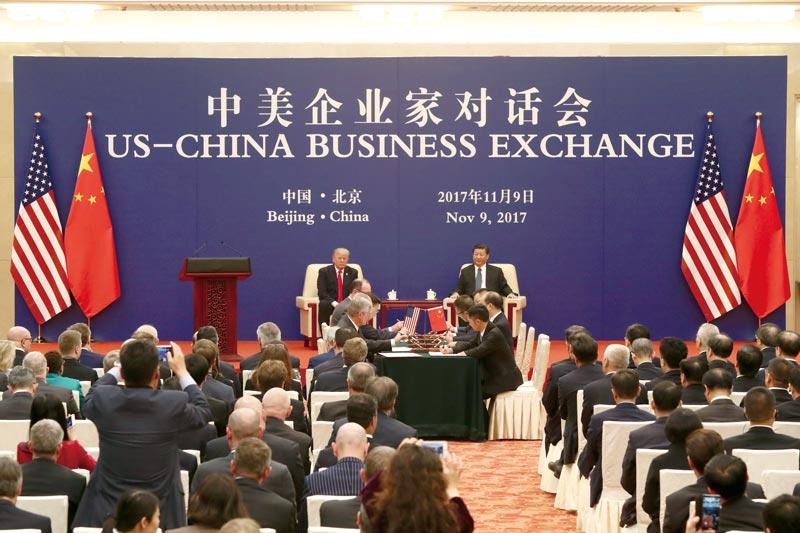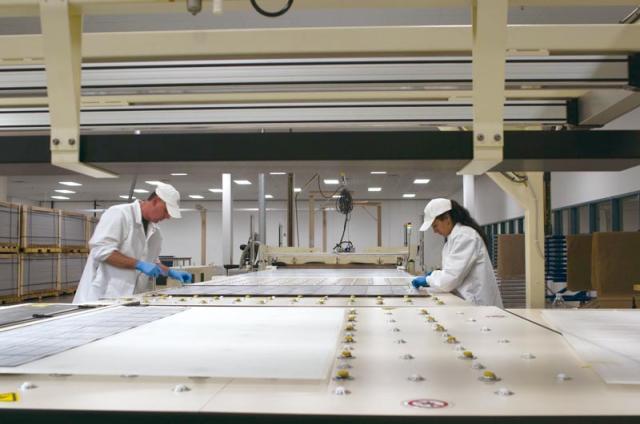“Trade is like dating, while investment is a marriage,” said Wang Shuguang, general manager of the US branch of Broad Group based in Changsha, Hunan Province in central China. He told NewsChina that more Chinese green field investment in the US can improve the impression US families have of China, as they will benefit from increasing incomes and come into contact with Chinese corporate culture.
Indeed, more than half of the total US$253.5 billion deal is about investment, with a majority from China to the US, as Yu Jianhua, China’s Vice Minister of Commerce, told media on November 13, 2017. The growing Chinese investment in the US in the past decade has turned the “FDI relationship into a two-way street,” which has “turned the FDI into a first-order priority in the bilateral relationship,” said a survey tracking the bilateral FDI between the two countries since 1995, released in November 2016 by the Rhodium Group and the National Committee on US-China Relations.
Generally, Chinese companies feel the US business climate is “neutral and stable,” according to the CGCC survey. In their interviews with NewsChina, several Chinese companies operating in the US appreciated the rule of law, market-oriented competition and quality of local staff. All this makes business risks in the US controllable, Wang from Broad Group told NewsChina.
Chinese companies see highly diverse opportunities in investing in the US. Li Shaolin, president of PetroChina International America, suggested sectors involving pharmaceuticals, life sciences and high-tech manufacturing, such as aviation, were ripe for investment, as well as production of auto, energy and consumption products which enjoy a big market in the US. “There is cooperation potential in any area where China and the US are complimentary to each other in terms of production materials, the consumer base and technology,” Hu Gang, CEO of property company Greenland USA, told NewsChina.
Finance is one of the main sectors that US companies have been eager to enter in China. A timetable to fully open the sector was declared by Zhu Guangyao at the briefing. In up to five years, there will be no limits for foreign ownership in financial institutions in China. The pace of relaxation depends on the sub-sector.
Although further opening up of the services sector is on China’s policy agenda set at the 19th CPC National Congress, this immediate, unprecedented step came as an even bigger surprise than the US$253 billion deal. Bloomberg described it as a “big bang moment,” comparing it to the sweeping financial deregulation of the UK in 1980s.
Chinese analysts generally regard the move as a positive step to encourage more competition in the financial sector for more efficient distribution of financial resources in the economy. Bao Fude, an official with Galaxy Futures Beijing, told NewsChina that he personally believes that Chinese futures companies would face more competition, particularly on the international market, from their US competitors who have more experience and expertise built up in the more developed US futures market.
Li Honghan, a research fellow with the International Monetary Institute of the Renmin University of China, explained to NewsChina that financial opening is a precondition of the yuan’s internationalization and the development of two-way foreign financial investment in and out of China. He added that China’s economy and financial sector are strong enough now to face external shocks and competition. For example, China’s banking sector now records a lower ratio of bad performing loans than its US or European peers.
Indeed, finance can serve as a China-US link extensively beyond the two countries and the financial sector. Bao thinks it is likely his company can work with US insurers on insurance and futures in agricultural products, like rubber, in Southeast Asia. Besides, China’s Dalian Commodity Exchange is trying to revitalize futures transaction on US soybeans, which account for about 70 percent of China’s soybean imports annually.
One Chinese man has started up his own business to help Chinese consumers get tax rebates from their overseas shopping. Although most of his clients shop in Asia, not in the US, they are middle-class groups that providers of financial, healthcare and education services from the US want to reach and understand. Once China opens these sectors to the US, there will be opportunities for him to work with US companies, he told NewsChina, on condition of anonymity.

 Old Version
Old Version


